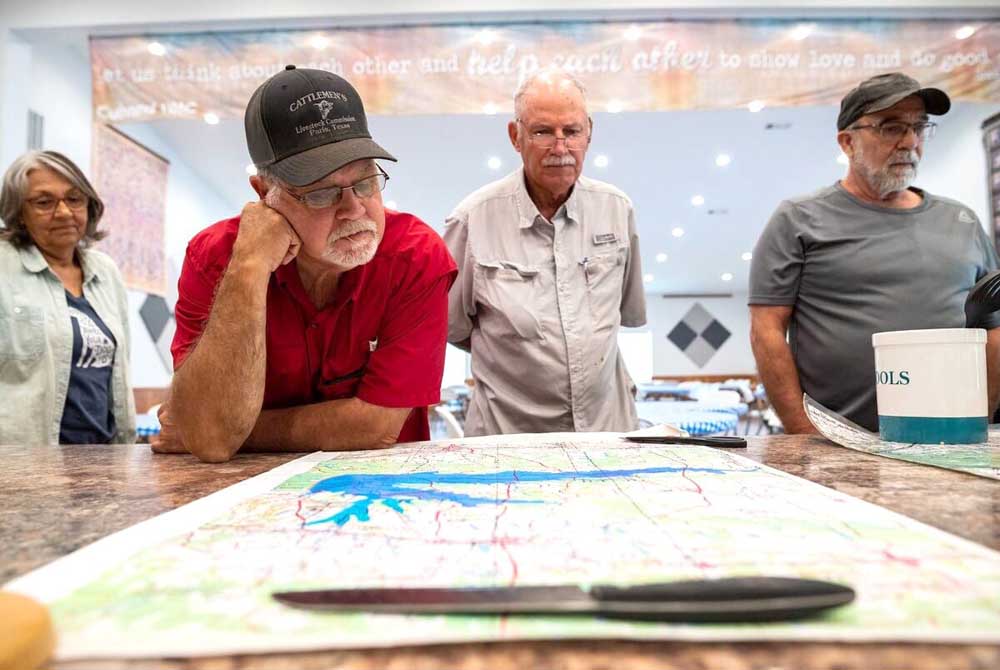East Texans’ input sought on Marvin Nichols Reservoir study
Published 5:40 am Tuesday, October 8, 2024

- Attendees at a July 2022 public meeting in Bogata look at a map of Red River County, where the Marvin Nichols Reservoir would be built. (Ben Torres/Texas Tribune File Photo)
East Texans have a few more weeks to voice their views on a controversial reservoir construction project that would flood 66,000 acres of land in the region.
The Texas Water Development Board is seeking public comment on a recently released study showing that the construction of the Marvin Nichols Reservoir in Northeast Texas would be feasible — an assertion that land owners, community members and elected officials dispute, saying the project would amount to a land grab with destructive consequences.
Trending
The public comment period will remain open through Oct. 25. It will be the last chance for the public to voice concerns about the study, which state lawmakers will review beginning in January, according to the Preserve Northeast Texas organization.
The reservoir would supply water to the Dallas-Fort Worth area, where population growth is expected to spur water shortages by 2070.
Discussion of building the reservoir, first proposed in 1968, has resumed in recent years as Texas faces a growing water shortage and increasingly drier future. The reservoir would be along the Sulphur River in Franklin, Titus and Red River counties. It would cost roughly $4.4 billion to build and could be completed by 2050.
More than 100 square miles of farmland, forest, timber plantations and communities would be flooded for its construction, and 200 square miles around it would be requisitioned to offset the effects of animal habitats destroyed by the reservoir, the News-Journal previously reported.
East Texans living in the area have voiced strong opposition to the project on social media and during a recent meeting with water officials in Arlington. They insist that the reservoir would cause significant harm to the region and object to the use of eminent domain to acquire land for it.
“People’s homes will be destroyed. Family cemeteries and land that people have worked for generations will be inundated,” Janice Bezanson, senior policy director at the Texas Conservation Alliance, told the News-Journal in 2023. “They’ll be forced to sell. Or the land will be condemned if they don’t.”
Trending
Bezanon estimates that more than 1,000 families would be displaced by the reservoir.
Preserve Northeast Texas, an organization that voices strong opposition to the project, states on its website that the project would be a “1950’s solution to a 21st century problem.” Reservoirs are susceptible to drought and aren’t sustainable in the long-term, according to the organization.
State Rep. Gary VanDeaver, who represents the area, wrote a Sept. 27 letter opposing the project, saying it “would not only be catastrophic for Northeast Texas businesses, but for the families that have called this land home for so long.” He said the project would be “one of the largest land grabs by eminent domain in Texas history.”
The recently released feasibility study analyzed the implementation timeline, cost, land acquisition considerations and economic impact of the project and found that nothing would make the project infeasible.
Members of the public can comment on the results of that study by emailing input to feasibility@twdb.texas.gov by Oct. 25 at 11:59 p.m.






